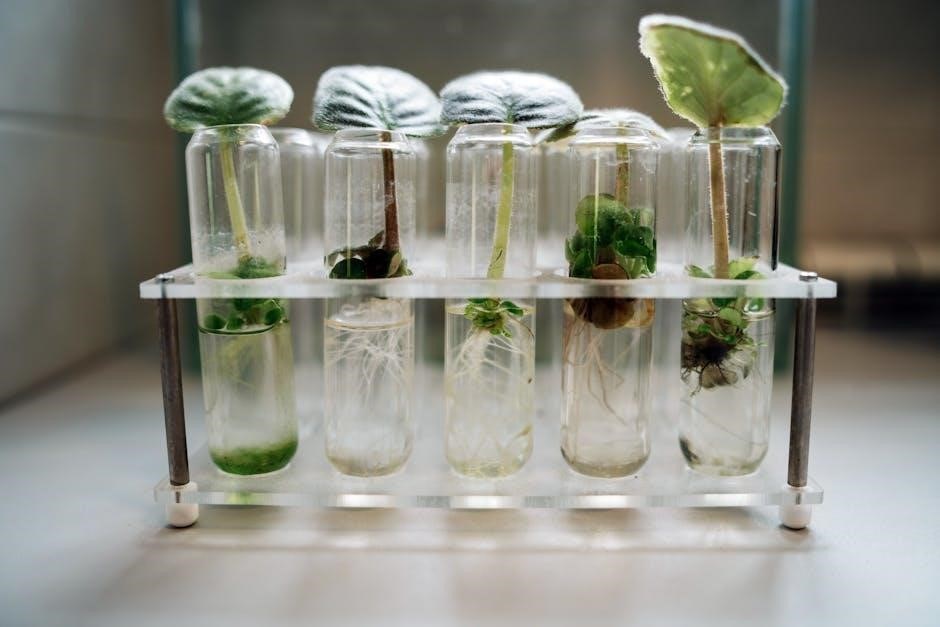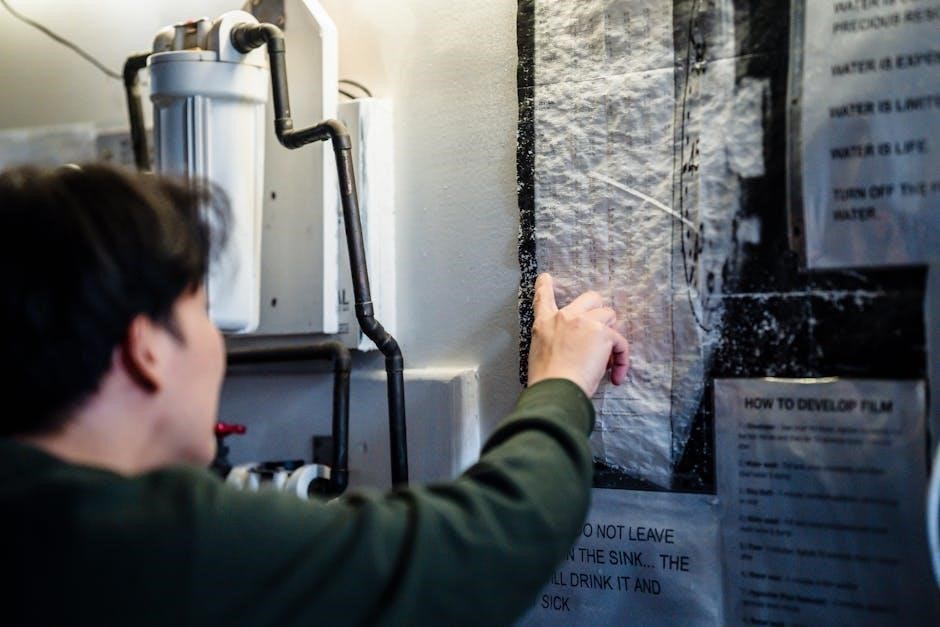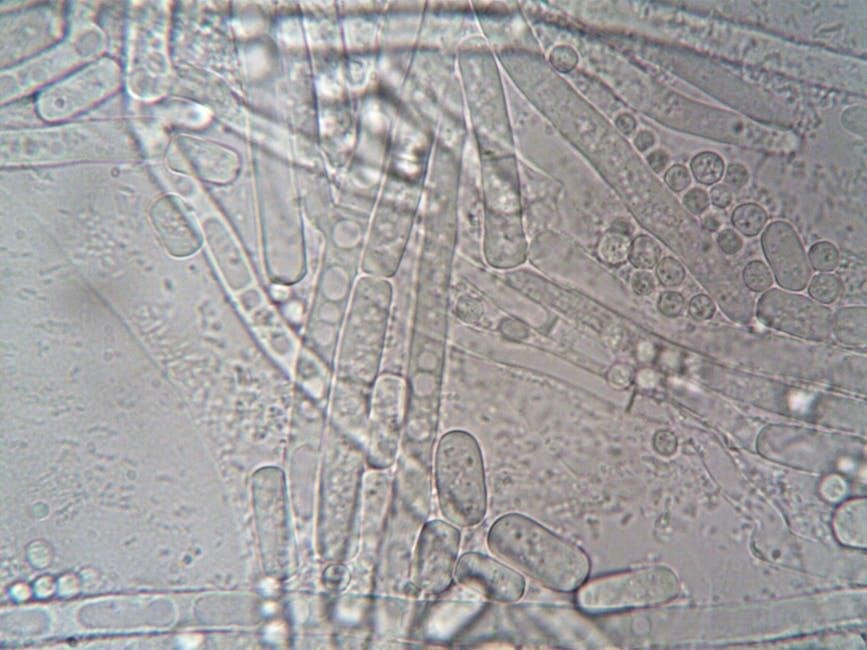Photosynthesis and cellular respiration are fundamental bioenergetic processes sustaining life, converting energy between forms and enabling ecosystems to function. They form the basis of energy exchange in nature.
1.1 Importance of Photosynthesis and Cellular Respiration in Life
Photosynthesis and cellular respiration are vital for sustaining life on Earth. Photosynthesis provides oxygen and organic molecules, serving as the primary energy source for most living organisms. Cellular respiration converts these molecules into usable energy (ATP), essential for growth, reproduction, and cellular functions. Together, these processes maintain the balance of ecosystems, enabling energy flow from producers to consumers. They also regulate Earth’s atmosphere by exchanging oxygen and carbon dioxide, supporting biodiversity and ecological stability. Without these processes, life as we know it would not exist, as they form the foundation of energy production and nutrient cycling in nature.
1.2 Overview of Energy Flow in Ecosystems

Energy flows through ecosystems in a unidirectional manner, beginning with photosynthesis, where producers (plants and algae) capture sunlight to create organic molecules. These molecules are transferred to consumers (herbivores and carnivores) through food chains and webs. At each trophic level, only a fraction of energy (about 10%) is transferred, as some is lost as heat or used for metabolic processes. Cellular respiration plays a critical role, breaking down organic matter to release energy for cellular functions. Decomposers return energy to the environment, completing the cycle. This energy flow sustains life, enabling ecosystems to function and maintain biodiversity. Both photosynthesis and respiration are essential for this continuous energy exchange, forming the backbone of ecological balance.

Photosynthesis
Photosynthesis is the process where plants convert sunlight, CO2, and water into glucose and oxygen, using chlorophyll in chloroplasts to produce energy essential for growth and development.
2.1 Stages of Photosynthesis
Photosynthesis occurs in two main stages: the Light-Dependent Reactions and the Calvin Cycle. The Light-Dependent Reactions take place in the thylakoid membranes of chloroplasts, where light energy is absorbed by chlorophyll and other pigments. This energy is used to split water molecules, releasing oxygen and producing ATP and NADPH. The Calvin Cycle, occurring in the stroma, uses ATP and NADPH to fix carbon dioxide into glucose. This process is essential for energy storage in plants, forming the basis of food production for ecosystems.
2.2 Factors Affecting Photosynthesis
Photosynthesis is influenced by several factors, including light intensity, carbon dioxide concentration, and temperature. Light intensity directly affects the rate of photosynthesis, as higher light levels increase energy availability until the light saturation point is reached. Carbon dioxide concentration impacts the Calvin cycle, with higher levels enhancing CO2 fixation. Temperature affects enzyme activity, with optimal ranges varying by species. Chlorophyll content and the overall health of the plant also play roles. Environmental factors like water availability and nutrient levels indirectly influence photosynthesis by affecting stomatal opening and chloroplast function. Understanding these factors is crucial for maximizing photosynthetic efficiency in plants.
2.3 Chloroplast Structure and Its Role
Chloroplasts are organelles found in plant cells, essential for photosynthesis. Their structure includes a double membrane, an inner matrix (stroma), and membranous thylakoids stacked into grana. Chlorophyll, embedded in thylakoid membranes, absorbs light energy. The stroma contains enzymes for the Calvin cycle, converting CO2 into glucose; Chloroplasts also produce ATP and NADPH during the light-dependent reactions. Their unique structure facilitates light absorption, energy conversion, and carbon fixation, making them vital for plant survival and ecosystem productivity. This specialized organelle is a cornerstone of photosynthesis, enabling plants to harness solar energy and sustain life on Earth.

2.4 Chemical Equation for Photosynthesis
The chemical equation for photosynthesis is:
6 CO₂ + 6 H₂O + light energy → C₆H₁₂O₆ (glucose) + 6 O₂. This equation summarizes the conversion of carbon dioxide and water into glucose and oxygen, driven by sunlight. Chlorophyll absorbs light energy, which powers the reaction. CO₂ enters through stomata, while water is absorbed by roots. The process occurs in chloroplasts, with the Calvin cycle producing glucose. Oxygen is released as a byproduct. This equation illustrates the essential role of photosynthesis in producing energy-rich molecules for plants and, indirectly, for heterotrophs. The balanced equation highlights the stoichiometric relationship between reactants and products, emphasizing the efficiency of this vital biological process.
2.5 Importance of Photosynthesis in Ecosystems

Photosynthesis is the backbone of ecosystems, providing energy and organic compounds for life. It sustains food chains, as plants are primary producers, converting sunlight into glucose that supports herbivores and, indirectly, carnivores. Oxygen released during photosynthesis is vital for aerobic respiration in most organisms. This process also regulates Earth’s atmosphere by removing CO₂ and producing O₂, mitigating climate change. Additionally, photosynthesis maintains water cycles and influences temperature regulation. Phytoplankton in oceans rely on photosynthesis to support aquatic life, demonstrating its universal importance. Without photosynthesis, life as we know it would cease, making it an indispensable process for ecological balance and biodiversity. Its role in energy storage and carbon sequestration underscores its critical function in sustaining Earth’s ecosystems.

Cellular Respiration
Cellular respiration is a metabolic process converting glucose into ATP, releasing energy for cell functions. It occurs in mitochondria, sustaining life by producing usable energy efficiently.
3.1 Stages of Cellular Respiration
Cellular respiration is a multi-stage metabolic process that converts glucose into energy in the form of ATP. The three main stages are glycolysis, the Krebs cycle, and the electron transport chain. Glycolysis occurs in the cytoplasm, breaking down glucose into pyruvate, producing a small amount of ATP and NADH. The Krebs cycle takes place in the mitochondrial matrix, further oxidizing pyruvate, generating more ATP, NADH, and FADH2. The electron transport chain, located in the mitochondrial inner membrane, uses these electron carriers to produce a large amount of ATP through oxidative phosphorylation. Oxygen acts as the final electron acceptor, enabling the process to complete. Together, these stages efficiently convert glucose into usable energy, sustaining cellular functions.
3.2 Factors Affecting Cellular Respiration
Several factors influence the rate of cellular respiration, including oxygen availability, glucose concentration, temperature, and pH levels. Oxygen is critical for aerobic respiration, as it acts as the final electron acceptor in the electron transport chain. Without sufficient oxygen, cells resort to anaerobic respiration, which is less efficient. Glucose concentration directly affects glycolysis, with higher levels increasing the rate of breakdown. Temperature impacts enzyme activity, with optimal temperatures enhancing reaction rates, while extreme temperatures can denature enzymes. pH levels also affect enzyme function, as cellular respiration relies on specific pH ranges for proper functioning. Additionally, the availability of cofactors like NAD+ and FAD plays a role in maintaining the efficiency of the process. These factors highlight the interconnectedness of cellular respiration with cellular and environmental conditions.
3.3 Mitochondrial Structure and Its Role
The mitochondria are often referred to as the “powerhouses” of eukaryotic cells due to their central role in energy production through cellular respiration. The mitochondrial structure consists of a double membrane system, with the inner membrane folded into cristae to increase surface area. The matrix, enclosed by the inner membrane, is the site of the Krebs cycle, where acetyl-CoA is oxidized to produce carbon dioxide and generate NADH and FADH2. The electron transport chain, located in the inner membrane, uses these molecules to produce ATP through oxidative phosphorylation. Glycolysis, the first stage of cellular respiration, occurs in the cytosol, but the subsequent stages rely heavily on mitochondrial structures. This organelle is essential for efficient energy production, converting glucose into ATP while releasing carbon dioxide and water as byproducts.
3.4 Chemical Equation for Cellular Respiration
The balanced chemical equation for cellular respiration is:
C6H12O6 + 6O2 → 6CO2 + 6H2O + ATP (36-38 ATP). This equation represents the complete breakdown of one glucose molecule, combining with oxygen to produce carbon dioxide, water, and energy in the form of ATP. The process involves three stages: glycolysis, the Krebs cycle, and the electron transport chain. Glycolysis breaks glucose into pyruvate, the Krebs cycle oxidizes it to carbon dioxide, and the electron transport chain generates the majority of ATP. This equation underscores the conversion of chemical energy from glucose into usable ATP, while releasing water and carbon dioxide as byproducts. It is a critical representation of how cells generate energy efficiently.
3.5 Importance of Cellular Respiration in Cells
Cellular respiration is essential for providing energy to cells in the form of ATP, enabling vital functions like growth, reproduction, and maintenance of cellular processes. It breaks down glucose and other organic molecules to release energy, which is stored in ATP. This energy supports metabolic activities, muscle contraction, and biosynthesis of molecules. Additionally, cellular respiration produces carbon dioxide and water, which are reused in photosynthesis, maintaining the carbon cycle. Without cellular respiration, cells would lack the energy required to sustain life, making it a critical process for both autotrophs and heterotrophs. Its efficiency ensures optimal energy production, supporting the survival and function of all living organisms. Thus, cellular respiration is indispensable for cellular and organismal vitality.

Relationship Between Photosynthesis and Cellular Respiration
Photosynthesis and cellular respiration are interdependent processes, with photosynthesis producing oxygen and glucose, while cellular respiration breaks them down to release energy, maintaining life’s energy cycle.

4.1 Reactants and Products of Both Processes
Photosynthesis requires carbon dioxide, water, and sunlight to produce glucose and oxygen. Cellular respiration uses glucose and oxygen to generate carbon dioxide, water, and energy in the form of ATP.
4.2 Energy Transfer Between the Two Processes
Energy flows from sunlight to plants through photosynthesis, where light is absorbed and converted into chemical energy stored in glucose. This glucose is then used in cellular respiration to produce ATP, the primary energy currency of cells. The energy transfer is unidirectional, with photosynthesis capturing light energy and cellular respiration releasing it in a usable form. ATP bridges both processes, acting as a temporary storage molecule. This interconnected cycle ensures energy is continuously cycled between producers and consumers, maintaining life and ecological balance.
4.3 Interdependence of Autotrophs and Heterotrophs
Autotrophs, such as plants, produce glucose via photosynthesis, providing energy and organic molecules for heterotrophs. Heterotrophs, like animals, rely on consuming autotrophs or other organisms for energy. This interdependence is vital, as heterotrophs release CO2 during cellular respiration, which autotrophs use for photosynthesis. The oxygen produced by photosynthesis is essential for heterotrophs to perform aerobic respiration. This mutual reliance creates a balanced energy cycle, ensuring the survival of both groups. Autotrophs form the base of food webs, while heterotrophs drive energy flow through ecosystems. Their relationship underscores the interconnectedness of life, where one process fuels the other, maintaining ecological harmony.

Key Molecules and Concepts
ATP, chlorophyll, and oxygen are central molecules in photosynthesis and cellular respiration. Chlorophyll captures light energy, while ATP stores and transfers energy. Oxygen is a byproduct of photosynthesis and a reactant in cellular respiration.
5.1 Role of ATP in Both Processes
ATP serves as a critical energy carrier in both photosynthesis and cellular respiration; In photosynthesis, ATP is produced during the light-dependent reactions and used to fuel the Calvin cycle, enabling the conversion of CO2 into glucose. Conversely, in cellular respiration, ATP is generated through glycolysis, the Krebs cycle, and the electron transport chain, storing energy from glucose breakdown. While photosynthesis produces ATP for biosynthesis, cellular respiration produces ATP to power cellular activities. This energy exchange highlights ATP’s central role in linking these processes, ensuring efficient energy flow within cells and ecosystems.
5.2 Function of Chlorophyll and Pigments

Chlorophyll and other pigments play a vital role in photosynthesis by absorbing light energy and initiating the conversion of CO2 and water into glucose. Chlorophyll a and b are the primary pigments, absorbing blue and red light while reflecting green, which is why plants appear green. Accessory pigments like carotenoids (e.g., carotene and xanthophylls) broaden the range of light absorption and protect the plant from photodamage. These pigments are embedded in the thylakoid membranes of chloroplasts, where they transfer energy to ATP during the light-dependent reactions. Without chlorophyll and other pigments, photosynthesis would be unable to capture the energy required to power the Calvin cycle, making them indispensable for plant survival and energy production.
5.3 Role of Oxygen in Cellular Respiration and Photosynthesis
Oxygen serves dual roles in cellular respiration and photosynthesis, acting as a critical reactant and byproduct. In cellular respiration, oxygen is the final electron acceptor in the electron transport chain, enabling the production of ATP during oxidative phosphorylation. This process is essential for energy generation in cells. Conversely, in photosynthesis, oxygen is a byproduct of the light-dependent reactions, where water molecules are split to release oxygen into the atmosphere. This oxygen is vital for aerobic organisms, including plants and animals, to sustain life through respiration. The interplay of oxygen in both processes highlights the interconnectedness of photosynthesis and cellular respiration, maintaining the balance of oxygen in ecosystems and supporting the energy needs of living organisms.
